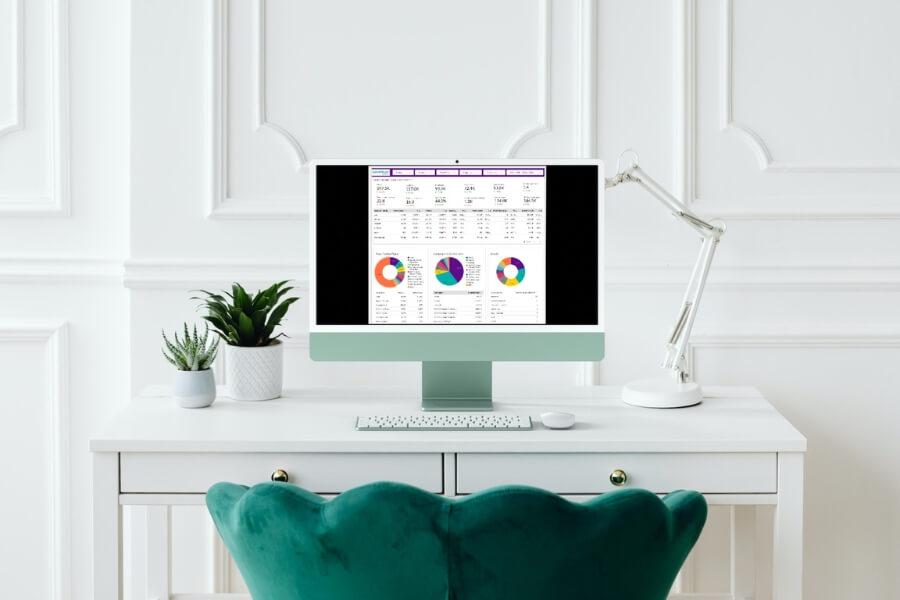It seems a really simple question, how do people come to actually buy from you? What is their path to purchase?
What’s surprising is – many businesses actually don’t fully understand where their customers come from and how they make choices to buy from them.
So when things get difficult – a recession hits – and priorities change, you need to generate revenue. If you don’t understand your funnel and how people come to work with you, you risk making the wrong decisions around what to do to get those sales.
You may waste time and money creating content or developing online ads that target the wrong people, at the wrong time, with the wrong information.
Before we dive into that in more detail, let’s look at what is traditionally known as “the funnel”.
The funnel – or the buyer decision process – outlines the stages consumers go through to make a purchase decision.
For a simple concept this has had many iterations/labels over the years, but the essential stages are the same.
It applies for both consumer buying decisions and business buying decisions. The business buying approach is likely to have more people involved in the decision process (death by committee!) or a more ‘professional’ buying effort.
Stage One – Recognition of a problem or a need
This need can be triggered internally from a variety of basic human needs, like hunger, thirst or sex or externally from an ad or a discussion with a friend.
Your role here is to understand the drivers that are occurring at this point, this is especially important when you think about what happens next and how you might need to frame your message.
You must ask yourself
- what is going on in the mind of the consumer here,
- what kinds of problems or needs are occurring here,
- what brought these about and
- how they lead customers to a product.
Stage Two – Information Search
Stage two is where we begin to search for information about the product or service. Buyers here start to look around, to suss out what’s out there in terms of choice. Then they start to work out what might be the best product or service for solving the problem – or satisfying the need.
A customer may or may not conduct research, depending on the kind of product or service they are searching for – as well as whether they are interested right now, or have stored the need/problem awareness in their mind for later.
Say you’re in the market for a new car for, example. You might suddenly find yourself paying attention to ads, cars owned by your friends or tune into conversations about cars that you never did before.
You may also be active in this research. You could find yourself browsing carsales.com.au or (when not in COVID lockdown!) spend a Sunday browsing some car yards.
Consumers find their information from two sources – personal and commercial. The commercial information is what is controlled by the marketer, i.e. you. Whilst this means you can control a considerable amount of the messaging, personal sources are likely to carry a lot of weight in this information research phase.
Stage 3 – Evaluation
Stage three sees the evaluation of the available alternatives, whereby the buyer decides upon a set of criteria by which to assess each alternative.
It is in this stage as well that the consumer exercises two decisions: where, and when, to buy a product.
This is where your potential buyer is hopefully considering you and your offer against others. Some consumers might be weighing up the options with careful consideration, while some people may be more intuitive and make decisions based on gut feel.
Understanding who you are talking to can help ensure that your messaging at this point leads prospects onto the next stage.
Stage Four – Purchase
We buy or select a product/service/supplier in this stage.
Individuals for consumer purchases – or teams of buyers for business purchases – will make the final choice of what to buy and who to buy it from here.
The experience of buying from you is also something to be mindful of when considering your funnel, especially due to how this leads into stage five.
Positive customer experiences are critical in generating loyalty and repeat purchases, and in an era of social media and increasingly trusted peer reviews, voicing customer experiences can significantly influence future buying decisions – both positively and negatively.
Stage Five – Post Purchase Behaviour
This is an important note – the funnel process continues even when the product or service is being used by the individual or business.
So if it doesn’t meet their needs or solve their problem – you can take action to improve the product or service.
Your actions at this point might inform other potential buyers, who would be keen to hear about their experiences – good or bad.
This area looks at what is known as customer loyalty and potential brand advocacy – those valuable word of mouth referrals we all crave.
This part of the path to purchase funnel can often be a self fulfilling prophecy for you. During downturns in our economy you want to hold onto your customers (loyalty) and if they are brand advocates for you this can help secure new referral business when budgets are tight (advocacy).
Understanding TOFU, MOFU and BOFU
So now that we have the Marketing101 lecture information laid out – what is the path to purchase for your customers?
Can you map out what this looks like for your business?
Can you track the various stages people go through to buy from you?
If you have no idea, or just a vague feeling that you get your business from word of mouth or referrals, how do you know?
The truth is many businesses don’t have a clue – as they are not tracking this.
They don’t know what is happening during the Top of Funnel phase, The Middle of Funnel phase and the Bottom of Funnel Phase.
- They don’t ask “how did you hear from us”.
- They don’t track behaviour at their website properly
- They don’t measure traffic numbers vs phone calls vs form completion vs proposals vs wins in a say professional service business and they don’t follow the consumer journey either
- Traffic vs Acquisition Path vs Add to Cart vs Checkout vs Abandoned Cart vs Sale.
Why is understanding your sales funnel so important when it comes to path to purchase?
The reason understanding our business is so important is because it helps you know what action to take next.
There is no point creating more top of funnel content, if the problem for you is something happening down the chain at the Abandoned Cart area.
There is no point working on fancy sales pages that drive conversion to a sale, if people have no awareness of you – or their problem that gets them looking in the first place.
We each need to take stock of what is happening in our sales funnels right now, to ensure that our efforts to achieve our business goals are being spent in the right areas.
COVID-19 may very well be the perfect time for you to pull back and examine this information.
If you don’t know where to start, we can help.
Reach out to us today to help you understand your customers path to purchase.



